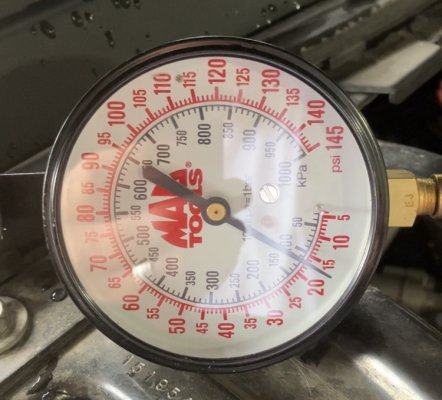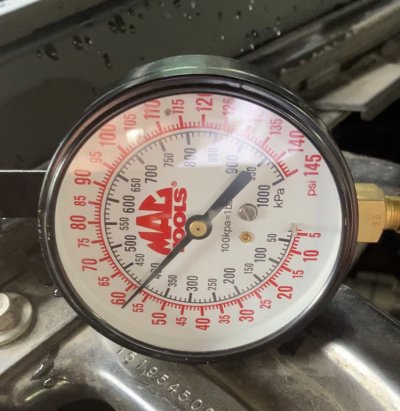FAUST
Member
- Joined
- Sep 27, 2023
- Posts
- 45
- Reaction score
- 26
2007 Tahoe 5.3L Flex Fuel - some hesitation when accelerating. Periodically throws p0300 - indicates lifter replacement as fix.
There isn’t a loud tick typically associated with collapsed lifters. Talking with a GM master tech, suggested testing fuel pressure before performing lifter DOD AFM delete.
Testing fuel pressure - 59-60 PSI while running - when relief valve is open drops below 30 and doesn’t recover.
Testing with key on engine off - 59-60 PSI. After 25 minutes pressure drops to 35 PSI and continues to drop.
My question is - what is an acceptable loss of pressure over time? Would this be an indication of a bad fuel pump?
Any ideas or advice is great!
Pictures showing PSI before and after relief valve is open - engine is running.
There isn’t a loud tick typically associated with collapsed lifters. Talking with a GM master tech, suggested testing fuel pressure before performing lifter DOD AFM delete.
Testing fuel pressure - 59-60 PSI while running - when relief valve is open drops below 30 and doesn’t recover.
Testing with key on engine off - 59-60 PSI. After 25 minutes pressure drops to 35 PSI and continues to drop.
My question is - what is an acceptable loss of pressure over time? Would this be an indication of a bad fuel pump?
Any ideas or advice is great!
Pictures showing PSI before and after relief valve is open - engine is running.


